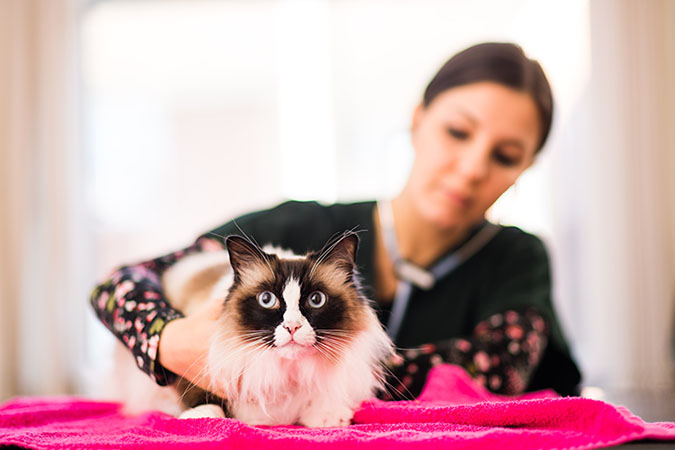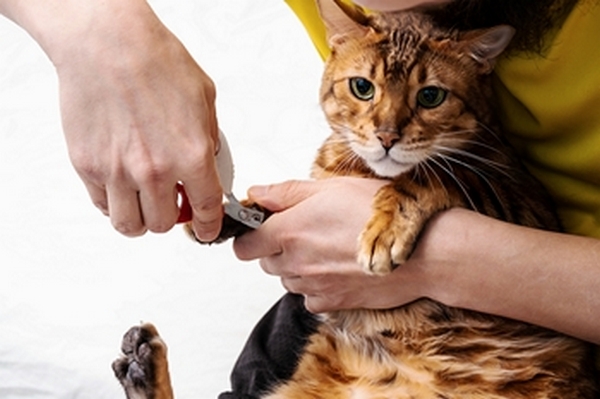16 money saving tips for cat owners
Owning a cat is an incredibly rewarding experience, but it’s also expensive.
Some estimates suggests it can cost as much as £24,000 to keep, feed and care for a cat over their lifetime.
As the cost of living rises, there are concerns some owners may resort to rehoming their pets to make ends meet.
Our senior vet, Dave Tweedle has put together this list of tips to help cat owners keep costs down.
1. Keep up to date with parasite prevention
Parasites such as fleas, ticks and worms (roundworms, hookworms, tapeworms, whipworms, lungworms) can make cats very ill. Getting rid of a flea infestation can cost up to £200 while it can cost as much as £2000 to treat a cat for a case of chronic lungworm. Parasite prevention is the easiest and cheapest way to stop these issues developing.
2. Make sure your cat is vaccinated against serious disease
Prevention is better than cure which is why vets routinely vaccinate against serious disease such as feline herpesvirus, feline parvovirus, feline leukaemia and feline calicivirus. The cost for treating these diseases is far higher than the cost of vaccination. Vaccines help keep your cat and your wallet healthy.

3. Measure out food
More than a third of cats in the UK are obese, which can lead to diabetes, bladder problems, liver disease and certain types of cancer. Measuring out your cat’s food correctly will guarantee they are receiving the right amount of nutrients and calories each day. This will save money on their food now and reduce vet bills in the future.
4. Give treats sparingly
Good quality cat food is highly formulated to give your cat the right amount of nutrients, proteins and calories to keep them happy and healthy. This means you don’t need to top up their diet with expensive treats (which can also lead to weight gain).
5. Upcycle your old clothes into a cosy bed
Cat beds usually cost around £20 to £30, which is a lot to pay when they’d probably be just as happy sleeping on a pile of clothes. Try putting old clothes in a cardboard box instead.
6. Use clumping litter
Non-clumping litter may seem like the best deal, but you could end up spending more in the long run. Boxes containing clumping litter should be emptied of clumps each day, but only need to be cleaned and refilled every few weeks, so you throw out less litter. Many cats also prefer it.
_2.jpg)
7. Get regular health checks
Six-monthly health checks provide your vet with the opportunity to examine your cat thoroughly. If this check-up reveals an underlying health problem, you’ll save money in the long term by treating it early.
8. Join a pet health plan
Preventative healthcare plans are offered by most vets and provide great value for money. You pay a monthly fee, and this covers vaccinations, regular parasite treatment and microchipping. Some, such as the Pet Health Club, also provide six-monthly nose-to-tail health checks as well as discounts on neutering, dentistry, specialist food, animal health certificates and lifelong medication. Beware of online retailers offering preventative healthcare plans at discounted rates — the treatments are rarely vet-prescribed, and they don’t offer the same perks.
9. Make your own cat toys
Commercial toys are often expensive and don’t last long around sharp teeth and claws. Luckily, cats are generally relaxed when it comes to enrichment and wellbeing. Instead of buying toys, you can save money by making sure they have places to perch, cardboard tubes to bat and bite and strings, feathers and fabric to hunt, stalk, chase and catch.
10. Get your cat a scratching post
Whether you buy one new or make your own, making sure your cat has somewhere to scratch and claw will not only keep them happy and your furniture safer, it’ll also help keep your cat's nails trim and healthy.
.

11. Check if you qualify for low-cost veterinary treatment
Some pet owners, particularly those on certain benefits, may qualify for free or subsidised treatment from charities such as PDSA, Blue Cross and the RSPCA. Visit their eligibility checkers online and if you’re worried about paying for veterinary care, speak to your vet about tailored treatments and payment plans. Remember, putting healthcare off until it’s too late could have consequences.
12. Spay or neuter your cat
Did you know the main reason people give up their cats is due to unwanted litters and pregnancies? Unless you plan on your cat having kittens, spaying or neutering them is essential and it will reduce the risk of disease and infection which can be costly to treat.
13. Learn minor healthcare
It's simple to treat some minor issues in cats. For example, most owners can avoid a trip to the vet by trimming their cat’s nails or removing ticks themselves. If you’re worried about your pet’s health and not sure if you need to see a vet in person, try an online consultation first. At Video Vets Now, this costs £30 but you’re refunded the fee if you need to visit your vet.

14. Keep dangers out of reach
One of the most common reasons for cats needing expensive emergency treatment is swallowing something toxic. Lilies, daffodils, chocolate, garlic, grapes, household products and human medications are among the main culprits. Keep these dangers well out of claw’s reach.
15. Consider keeping your cat inside more
It’s a fact that indoor cats live, on average, far longer than outdoor cats. It almost goes without saying outdoor cats are also more likely to need emergency treatment for things like road traffic accident injuries. If you do choose to keep you cat indoors, ensure they receive plenty of stimulation.
16. Use pet food banks
Tragically, there’s demand for pet food banks in almost every corner of the UK. If you’re really struggling to afford to feed your cat, these are worth considering.



